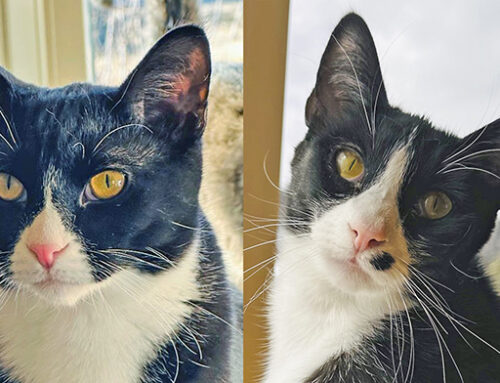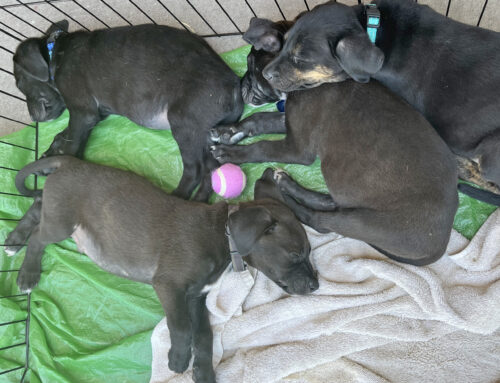Dear Pet Column, Do cats get cavities?
So here is a mostly unknown feline fact: cats don’t get cavities like humans do. Instead we get something called cat tooth resorption. To add to the allure of the mysterious cat, no one really knows what causes it. But here is what you should know about it…
So think about teeth. The outermost layer above the gums is the enamel. It’s very thin, but it’s the toughest part of the tooth (another fun fact – it is the hardest substance in the body — human or feline).
The next layer takes up the most room. It’s made from a bone-like material called dentin. Inside is a very soft substance: the pulp of the tooth. A lot goes on here. It’s the rich environment that feeds and nourishes the tooth, and it serves as the tooth’s nerve center. These are the tooth’s security and alarm systems, letting its host know when something’s wrong by sending signals of sensitivity or pain.
Tooth resorption is the process where a substance is absorbed back into its surrounding tissues. Whereas a cavity occurs when erosion or decay is present, with tooth resorption the outer layers begin to be eaten away, absorbed into internal layers. In many cases, the roots reabsorb into the surrounding flesh until nothing remains but soft tissue. At this point the tooth is irreparably damaged, and there is no option but to remove it.
As resorption progresses and the nerve center is exposed, a cat can experience a lot of pain. Cats are notorious at hiding pain, so you might have to pay close attention to see this. Look for drooling, a preference for eating on one side of the mouth, or suddenly starting to swallow food whole. If your cat will let you, look at his teeth and see if you notice any red spots or holes on the tooth.
As yet the cause cat tooth resorption is undetermined, although a few studies suggest a culprit: the amount of Vitamin D in a cat’s diet. Cats cannot absorb vitamin D through their skin (all that sunbathing for nothing!) and need to get if from their food. So it is added into most cat food but unfortunately often in excess, (in some foods, up to 30 times greater than necessary!).
Currently the thought is that excessive vitamin D intake or low vitamin D serum levels can both lead to tooth resorption. To complicate matters, most pet food labels list vitamin D as a supplement, but they don’t include the amount it contains and as there’s no definitive decision on how much is good or bad it doesn’t matter anyway.
So the solution: take your cat in for dental checkups twice a year instead of just at the annual wellness exam. Attempt (heh) brushing your cat’s teeth to remove plaque, or rubbing an anti-inflammatory such as Ellagic fatty acid complex on the gums.
My name is Tango. I am a beautiful one year young female orange long hair tabby with good teeth. I am a love-bug that likes other cats just fine but loves people more. And yes, I do like tango dancing but lately have taken an interest in knitting.







Leave A Comment